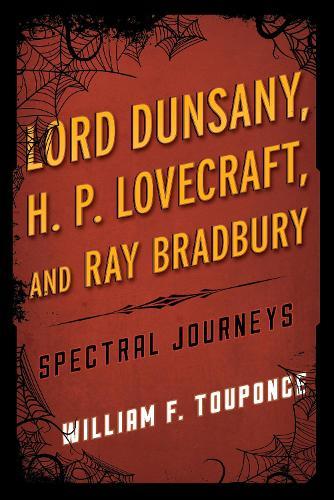Overview
In his classic study Supernatural Horror in Literature, H. P. Lovecraft discusses the emergence of what he called spectral literature—literature that involves the gothic themes of the supernatural found in the past but also considers modern society and humanity. Beyond indicating how authors of such works derived pleasure from a sense of cosmic atmosphere, Lovecraft did not elaborate on what he meant by the term spectral as a form of haunted literature concerned with modernity. In Lord Dunsany, H. P. Lovecraft, and Ray Bradbury: Spectral Journeys, William F. Touponce examines what these three masters of weird fiction reveal about modernity and the condition of being modern in their tales. In this study, Touponce confirms that these three authors viewed storytelling as a kind of journey into the spectral. Furthermore, he explains how each identifies modernity with capitalism in various ways and shows a concern with surpassing the limits of realism, which they see as tied to the representation of bourgeois society. The collected writings of Lord Dunsany, H. P. Lovecraft, and Ray Bradbury span the length of the tumultuous twentieth century with hundreds of stories. By comparing these authors, Touponce also traces the development of supernatural fiction since the early 1900s. Reading about how these works were tied to various stages of capitalism, one can see the connection between supernatural literature and society. This study will appeal to fans of the three authors discussed here, as well as to scholars and others interested in the connection between literature and society, criticism of supernatural fiction, the nature of storytelling, and the meaning and experience of modernity.
Full Product Details
Author: William F. Touponce
Publisher: Scarecrow Press
Imprint: Scarecrow Press
Dimensions:
Width: 15.60cm
, Height: 1.80cm
, Length: 23.90cm
Weight: 0.390kg
ISBN: 9780810892194
ISBN 10: 0810892197
Pages: 166
Publication Date: 10 October 2013
Audience:
College/higher education
,
Postgraduate, Research & Scholarly
Format: Hardback
Publisher's Status: Active
Availability: In Print

This item will be ordered in for you from one of our suppliers. Upon receipt, we will promptly dispatch it out to you. For in store availability, please contact us.
Reviews
Touponce examines each of his subjects' body of work as a critique of scientific, capitalistic modernity. He takes a broadly Marxist approach but draws on an eclectic mix of literary theorists, including Northrop Frye, Walter Benjamin, and Mikhail Bakhtin. Touponce associates the aesthetics of Dunsany, Lovecraft, and Bradbury with three different 'moods' of modernity identified by Benjamin: beauty, shock, and nostalgia, respectively. His explications of Dunsany's and Lovecraft's artistic rejections of modernity are particularly persuasive and perceptive. This book is one of the best critical works on Lovecraft in particular that this reviewer has encountered...The discussion of Bradbury's corpus is briefer than discussions of the other two writers, but equally interesting and sensitive. This fascinating book has much to teach about the power of fantastic fiction to express the shocks and horrors of modernity. Summing Up: Recommended. All readers. CHOICE
Author Information
William F. Touponce is emeritus professor of English at Indiana University at Indianapolis. Former director (2007–2011) of the Center for Ray Bradbury Studies, he is coauthor of Ray Bradbury: The Life of Fiction (2004).




